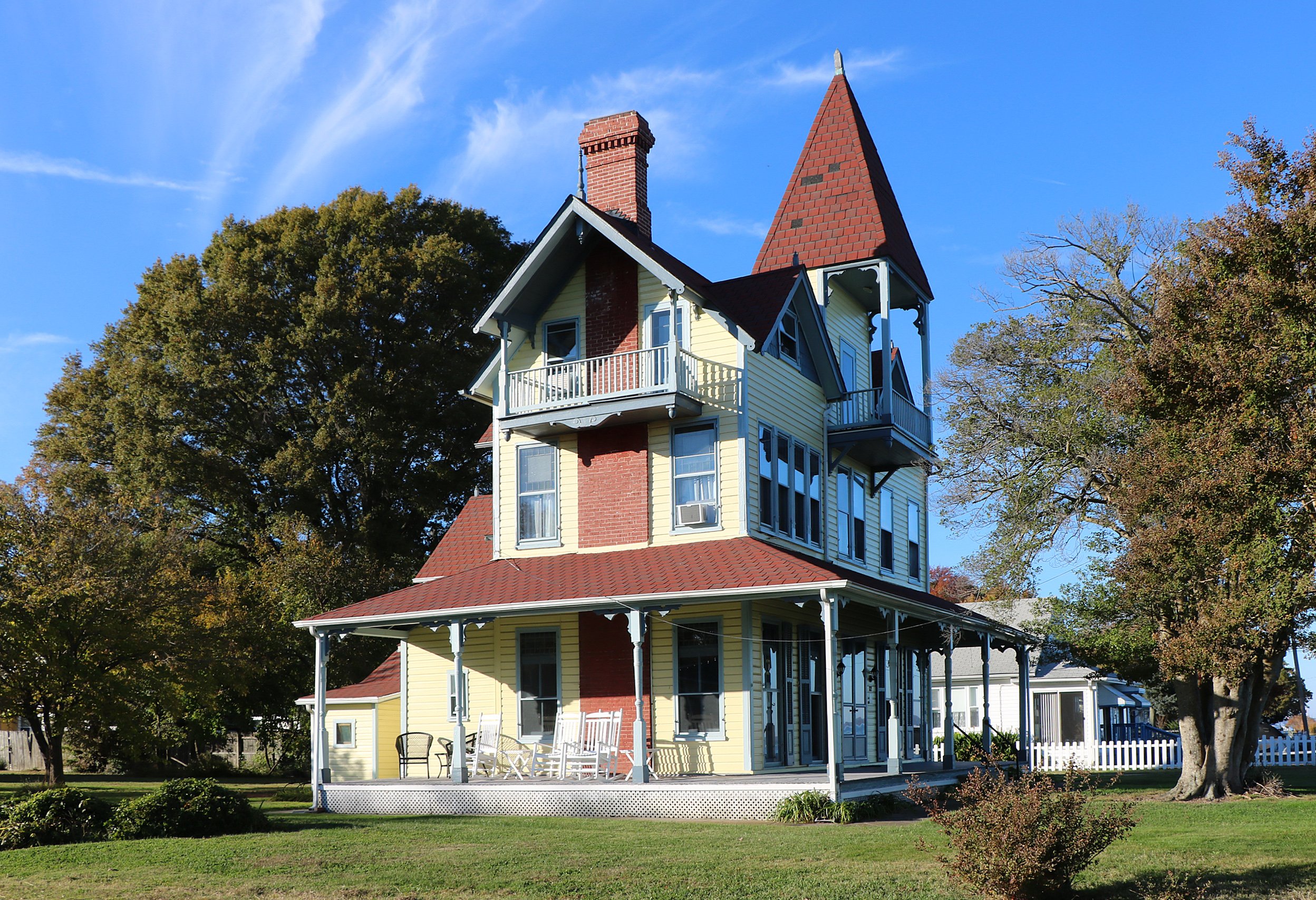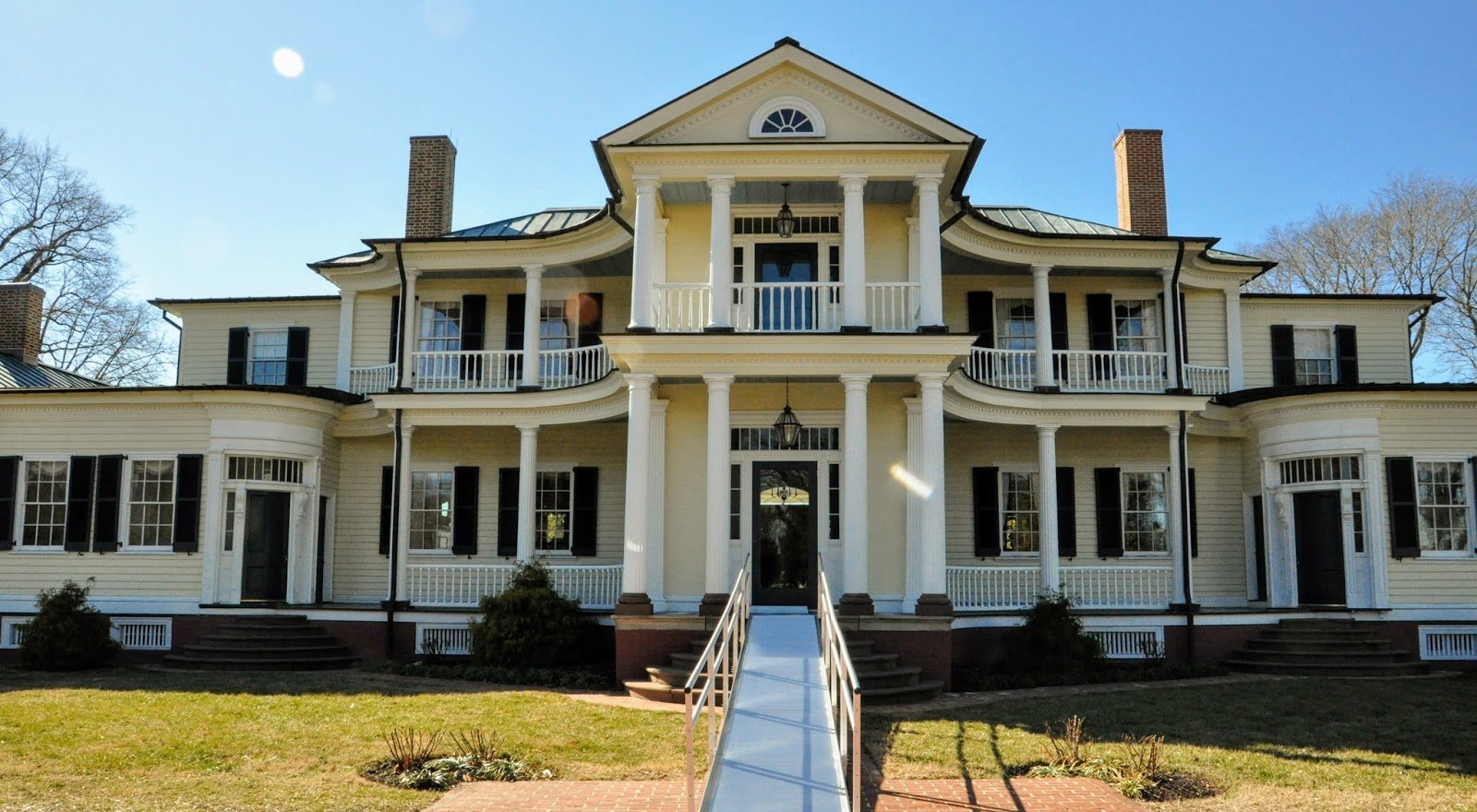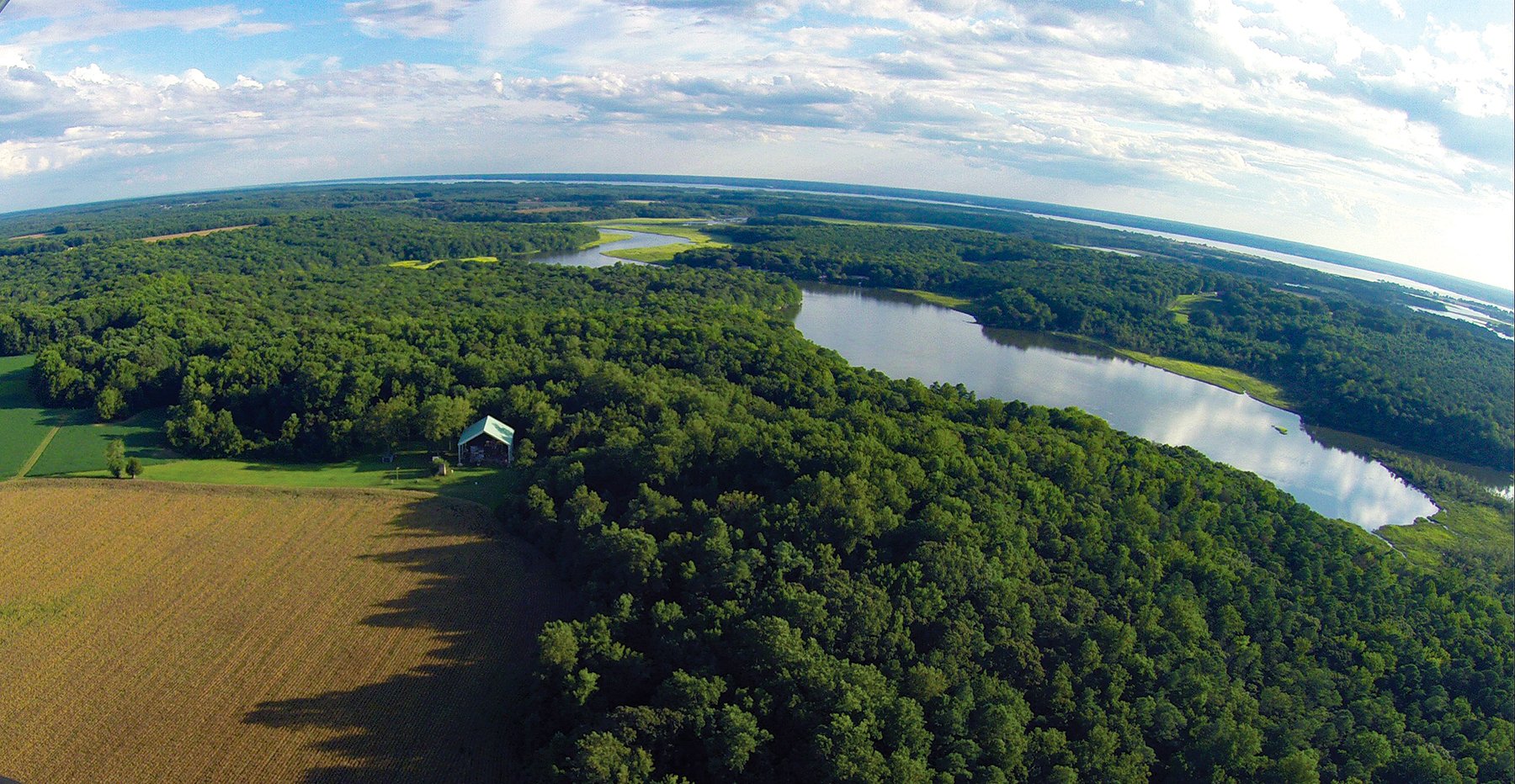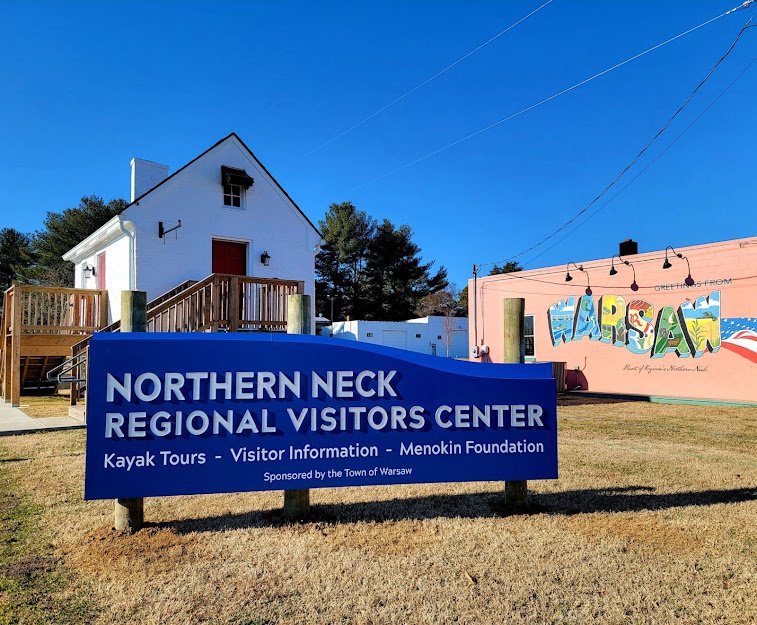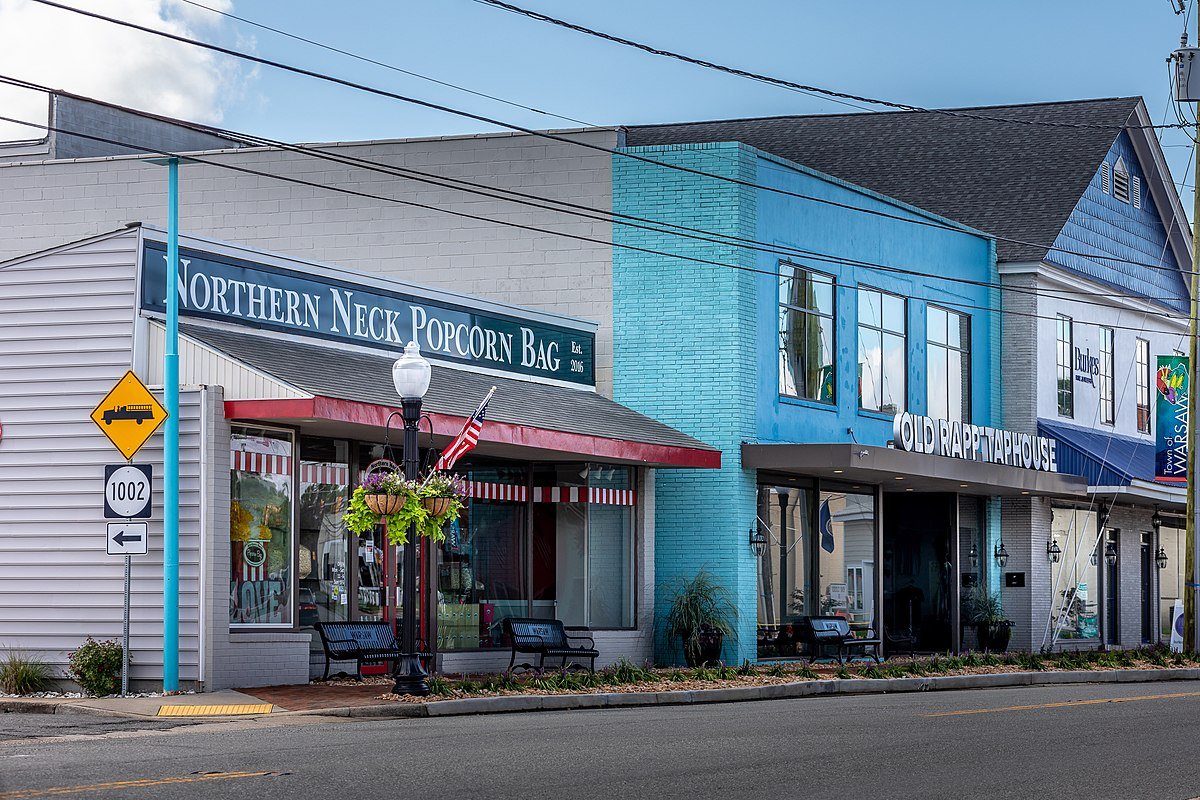Architecture Adventures in the Northern Neck by Alice French
This is the first post in a series about architecture of the Northern Neck. Today we kick off in Westmoreland County making our way through the region over two days to Richmond County.
The Northern Neck is dotted with historic houses across its landscape and with modern gems, as well. A few historic structures date as far back as the 17th century, and many designs still stand from the colonial era. Numerous 19th century to early 20th century homes have been converted into bed and breakfasts providing you a great opportunity to enjoy this period of architecture with a fine meal and lodging, too. I can’t cover everything in this guide, but along these roads are also numerous historic churches, schools and wineries which I will have to save for another time. This is an ambitious touring list, so you may have to come back again to see it all!
Day One
To orient you on your exploration, begin at the top of the Northern Neck. If you came across the Nice Bridge over the Potomac, the first engineering feat you will encounter is the construction of a new bridge! Pretty cool when they have all the cranes operating over the water floating atop barges. The existing Nice Bridge wasn’t built until 1941 which limited access to the Northern Neck for a long time.
As you enter the region from Route 301 in Dahlgren, meander your way down Route 205 to the 2nd largest public beach in Virginia, Colonial Beach. This town developed as a vacation and fishing resort in the 20th century, with folks originally arriving to its mile long beach by steamboat and staying at lovely Victorian homes and inns such as the Queen Anne style of The Bell House built in 1883, which was the summer home of Alexander Graham Bell. Colonial Beach has numerous other homes from this period with the oldest being the Central House built in 1875. There are plenty of historic lodgings if you want to stay the night. Stop by the Museum at Colonial Beach and pick up a walking tour or download it here.
As you head out of town, you can also make a stop at the replicated family home and birthplace of James Monroe, 5th president of the United States. The Northern Neck has often been referred to as the “Cradle of the Nation” as it was also the birthplace to the 4th president, James Madison (born at nearby Belle Grove), and 1st president, George Washington. You’ll pass George Washington’s Birthplace and National Monument, an 18th century working farm with recreated homes and work buildings of the Washington family, enslaved people and indentured servants with historical interpreters. The vista here is beautifully located along Pope’s Creek. Your next revolutionary stop is Stratford Hall, the childhood home of two signers of the Declaration of Independence, Francis Lightfoot Lee and his brother, Richard Henry Lee.
From Stratford, you can continue into Montross via Route 3 or meander the back way down Wild Sally Road to Panorama Road to Polk Street. On the back roads are many beautiful homes and farms and you get a taste of the rural country lifestyle Northern Neckers are so devoted to. Polk Street brings you into the middle of Montross. Within walking distance is The Westmoreland County Museum, Soda Shoppe, and the County Courthouse. Pick up a sandwich-to-go from the Art of Coffee- an old service station retro-fitted into a wonderful Coffee and Sandwich shop, complete with a mermaid mural to welcome you, and head down the road to discover repurposed and reinvented projects all over Montross.
Day Two
Turn off Route 3 onto Menokin Road until you reach this architectural transformation in progress- Menokin! I recommend a guided tour to learn how this 1769 National Historic Landmark is being saved as a ruin and restored with architectural glass! The end of Menokin Road terminates at a newly revitalized downtown Warsaw where you can stop by the Northern Neck Regional Visitors Center in the old Saddlery, c. 1830, to learn more about places to visit in the surrounding area including, the Richmond County Museum, which was once the Old Jail on the Courthouse Green.
Next you can make a loop through the lower half of the Northern Neck into Northumberland County. Head east on Route 360, pass the Westmoreland Players Theatre, a great spot to catch local theatre (and theatrical set designs), hang a right in Callao, and travel past the Gothic Revival style St. Stephen’s Episcopal Church, built in 1881 into Heathsville. You have a lot of territory to cover so I recommend booking a room in one of the charming Inns nearby such as the historic Ma Margaret’s House Bed & Breakfast. Before you get there, take time to stop at Rice’s Hotel/Hughlett’s Tavern. This historic town square supports a 1795 Tavern, a Guild with a working Carriage House, Blacksmith Shop, Community Space and gift shop. Review the website in advance and time your visit for one of their heritage art classes, too.
Alice French has been working with museums in the Northern Neck since 2007. Her work has centered around the historic, cultural and tourism community. Now at the Menokin Foundation as the Director of Education and Programs, she develops and creates programs for 4th grade through lifelong learners about the historical, architectural and environmental attributes of this 500 acre conservation classroom.


